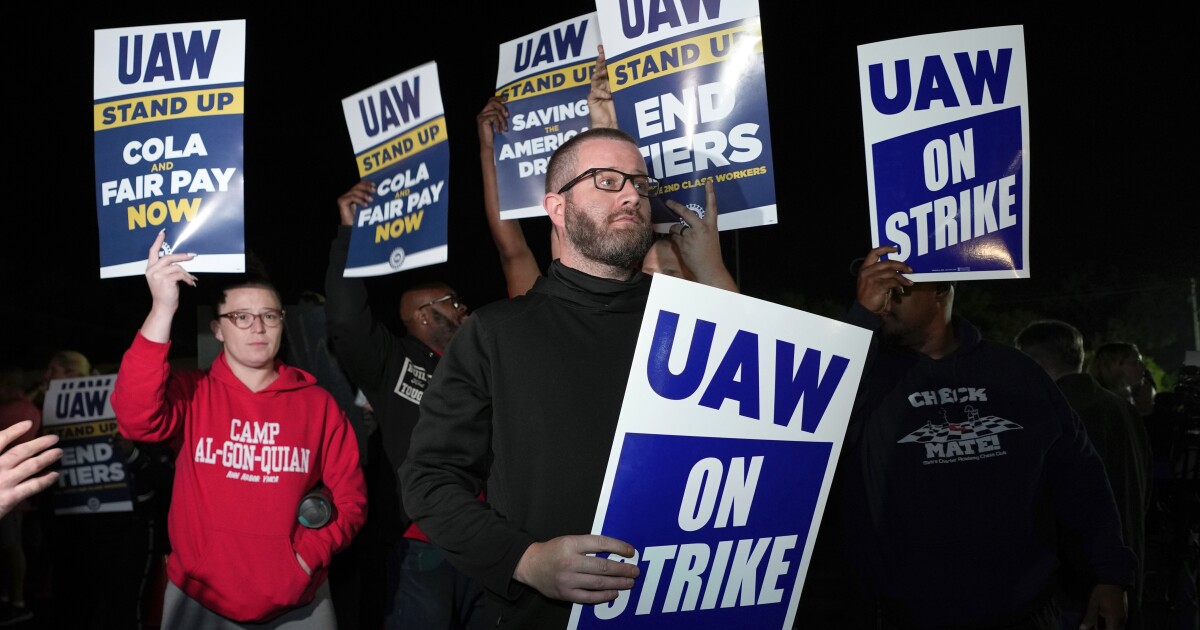

The summer has seen an unusually high number of strikes in the United States, continuing a rising trend for the past few years.
Early Friday morning, some 13,000 United Auto Workers went on strike at plants across multiple states run by the big three Detroit car companies: Ford, General Motors, and Stellantis. The highly publicized strike joins others that have made national headlines, such as this summer’s Screen Actors Guild and Writers Guild of America strikes. But the true number of strikers all across the U.S. is even higher.
UAW ANNOUNCES HISTORIC AUTO STRIKE AFTER NEGOTIATIONS WITH AUTOMAKERS FALTER
As of Friday, roughly 187,000 American workers are on strike in major strikes, which are those involving 1,000 or more workers, Nerd Wallet reported.
The major ongoing strikes are the UAW strike, the SAG and WGA strike, the Unite Here Local strike, and the Robert Wood Johnson University Hospital strike. All have similar demands — mainly higher wages, better protections, and better working conditions.
Two other large strikes are looming — 11,000 city service workers in the Service Employees International Union (SEIU) Local 721 and 22,000 flight attendants in the Association of Professional Flight Attendants look poised to strike soon as well, according to the outlet.
Last year saw a 50% increase in strikes from 2021, with 60% more workers, 224,000 in total, taking part, according to the Cornell University School of Industrial and Labor Relations Labor Action Tracker. Most of these came from the education sector— 60%. Despite the power of unions, strikes from non-union personnel still made up a considerable portion of strikes — 32%.
The U.S. Bureau of Labor Statistics counted 23 major work stoppages in 2022. In comparison, the historical lowest was 2009, with just five, and the highest was in 1952, with 470.
CLICK HERE FOR MORE FROM THE WASHINGTON EXAMINER
Despite the increase from 2021, striking is actually at a relative historical low compared to earlier eras.
“While we documented an uptick in strikes and approximate number of workers on strike in 2022 as compared with 2021, the level of strike activity is lower than earlier historical eras,” the report said. “The number of work stoppages and approximate number of workers involved in work stoppage is considerably less than the most recent comprehensive BLS data from the 1970s, and the approximate number of workers involved in work stoppages falls behind recent increases documented by the BLS in 2018 and 2019.”






